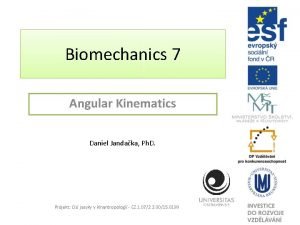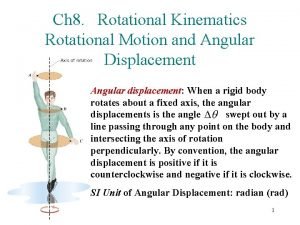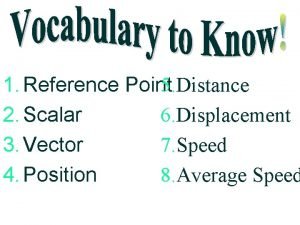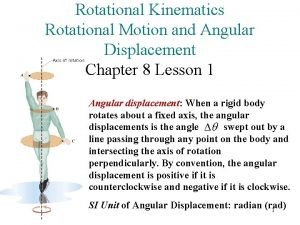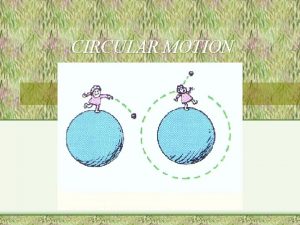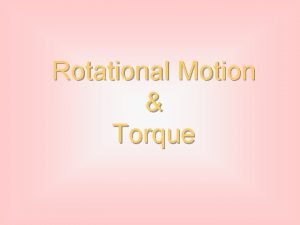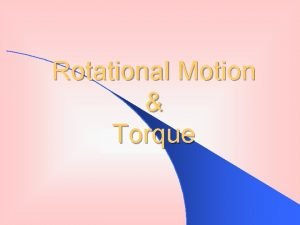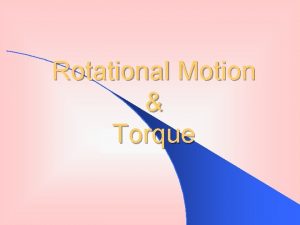Circular Translational Angular displacement q Radius r Translational





- Slides: 5

Circular (Translational) Angular displacement ( q) Radius (r) Translational displacement ( s) q = 1. 35 rev. r = 63. 7 m s = (2 p)( q)r = 540 m q = 486° r = 63. 7 m s = (2 p/360)( q)r = 540 m Angular (Rotational) q = 8. 48 rad r = 63. 7 m s = ( q)r = 540 m (Which units of q make the conversion simplest? ) For more review of these relations, see the extra exercises on the first two pages of the Prep 1 set. 1/7/19 OSU PH 212, Before Class 1 1

Instantaneous Measures of Motion Measure Displacement Rotation d Translation ds = rd Velocity = d /dt v. T = rd /dt Acceleration a = d /dt a. T = ra = rd /dt (All angles measured in radians. ) 1/7/19 OSU PH 212, Before Class 1 2

Linear kinematics when ax is constant vx. f = vx. i + ax( t) x = (1/2)(vx. i + vx. f) t x = vx. i( t) + (1/2)ax( t)2 vx. f 2 = vx. i 2 + 2 ax( x) (How were these derived? ) 1/7/19 OSU PH 212, Before Class 1 3

Linear kinematics when ax is constant Rotational kinematics when a is constant vx. f = vx. i + ax( t) f = i + a( t) x = (1/2)(vx. i + vx. f) t = (1/2)( i + f) t x = vx. i( t) + (1/2)ax( t)2 = i( t) + (1/2)a( t)2 vx. f 2 = vx. i 2 + 2 ax( x) f 2 = i 2 + 2 a( ) (How were these derived? ) What are the SI units of each quantity? Which are vectors? Which are scalars? 1/7/19 OSU PH 212, Before Class 1 4

Motion and preferred (SI) units for a rotating (rigid-body) object Entire rotating object A point on the object at radius r (m) from center Angular measure ang. position: q Translational measure (rad) ang. displacement: q (rad) arc position: s = qr (m) arc displacement: s = ( q)r (m) ang. velocity: w (rad/s) velocity: ang. acceleration: a (rad/s 2) tangential accel. : a. T = a X r = (ra)T radial accel: v. T = w X r = (rw)T (m/s) (m/s 2) a. R = w X v = (rw 2)R (m/s 2) = (v 2/r)R (m/s 2) total acceleration: a = a. T + a. R (m/s 2) T stands for “Tangential. ” The direction of the velocity vector is tangent to the circular path of the particle’s motion. 1/7/19 OSU PH 212, Before Class 1 5

